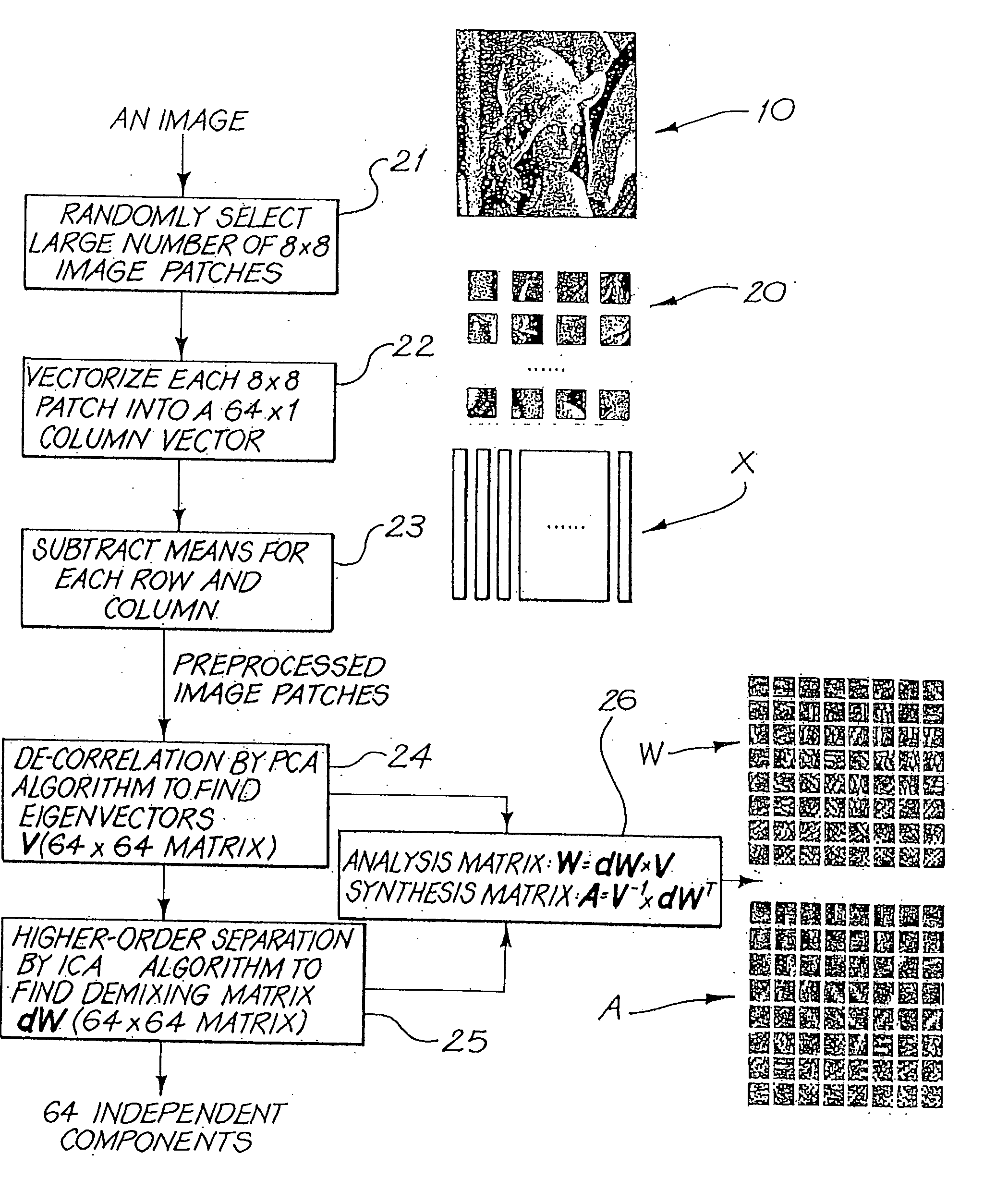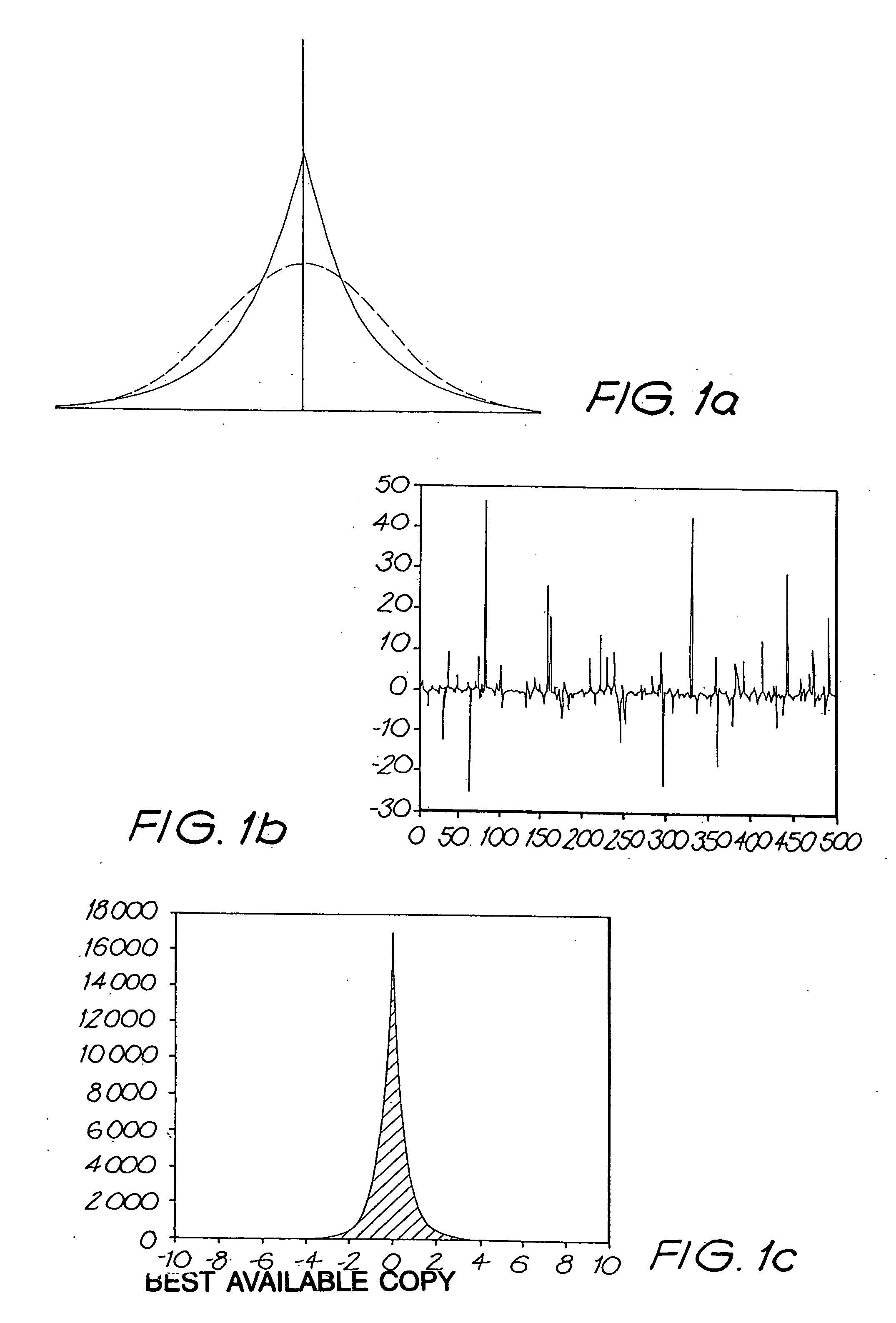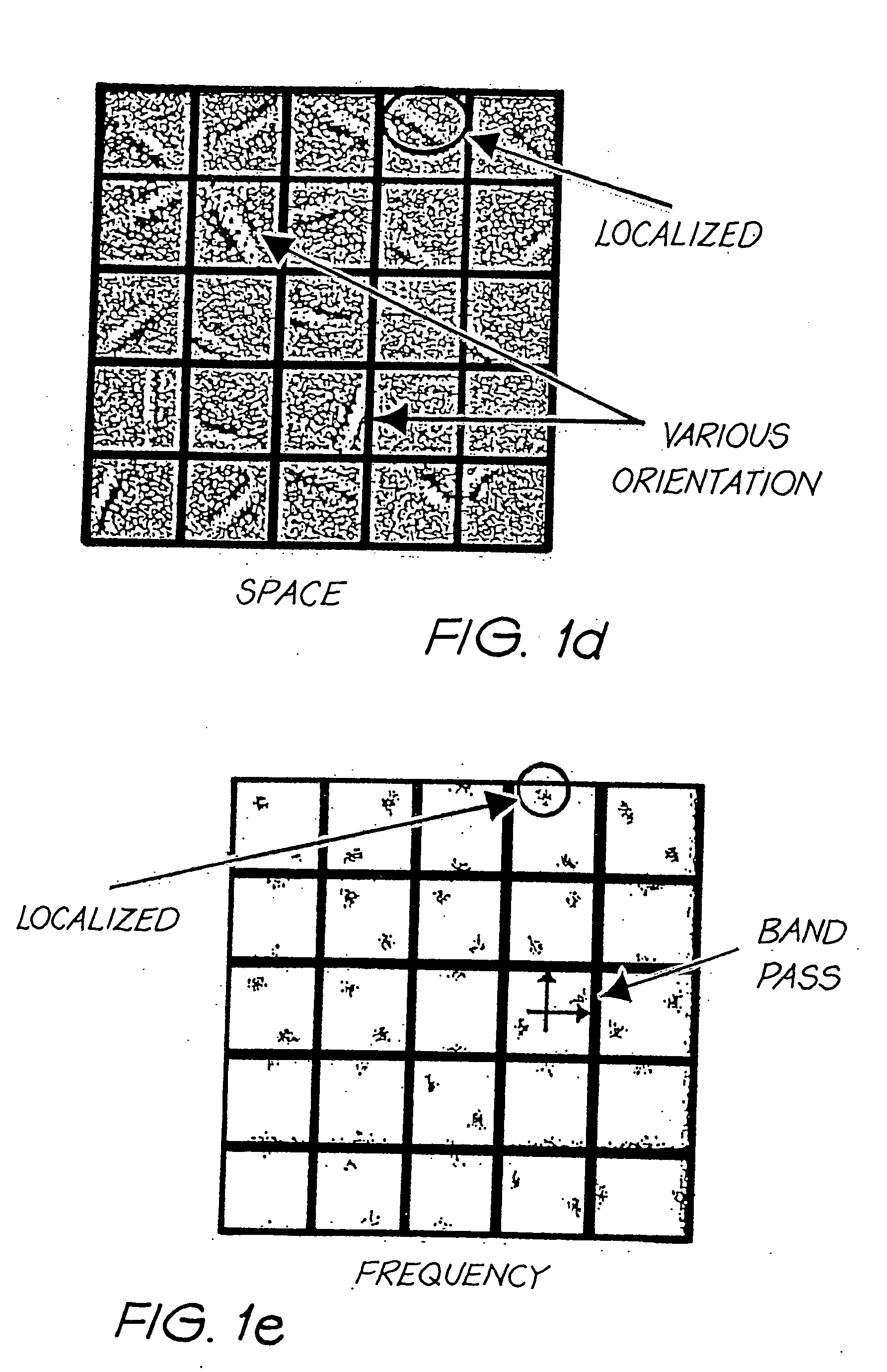Techniques and systems for embedding and detecting watermarks in digital data
a technology of digital data and embedding, applied in the field of digital data embedding and detecting watermarks, can solve the problems of hard removal, block or transform coefficient selection, and total removal of watermarks, and achieve the effect of reducing the number of watermarks
- Summary
- Abstract
- Description
- Claims
- Application Information
AI Technical Summary
Benefits of technology
Problems solved by technology
Method used
Image
Examples
Embodiment Construction
Before describing in detail the embodiment of the present invention, the ICA technique for processing data such as image data will be described briefly. Note that this technique is not presently known in the present technical field: watermarking of data.
The ICA technique is a signal processing method that transforms a signal to mutually independent components in the complete statistical sense. In image processing, the image coefficients obtained from one ICA feature (transform) are statistically independent from those from other ICA features. In other words, each ICA feature (transform), consisting of an analysis filter and a synthesis filter, uniquely and accurately represents a particular common shape in the image very well, and in an way which is very different from other features. This kind of transform gives a set of features with the least representation redundancy among them.
As an example, suppose that X is an observation matrix with each row xi as an observed vector. Th...
PUM
 Login to View More
Login to View More Abstract
Description
Claims
Application Information
 Login to View More
Login to View More - R&D
- Intellectual Property
- Life Sciences
- Materials
- Tech Scout
- Unparalleled Data Quality
- Higher Quality Content
- 60% Fewer Hallucinations
Browse by: Latest US Patents, China's latest patents, Technical Efficacy Thesaurus, Application Domain, Technology Topic, Popular Technical Reports.
© 2025 PatSnap. All rights reserved.Legal|Privacy policy|Modern Slavery Act Transparency Statement|Sitemap|About US| Contact US: help@patsnap.com



